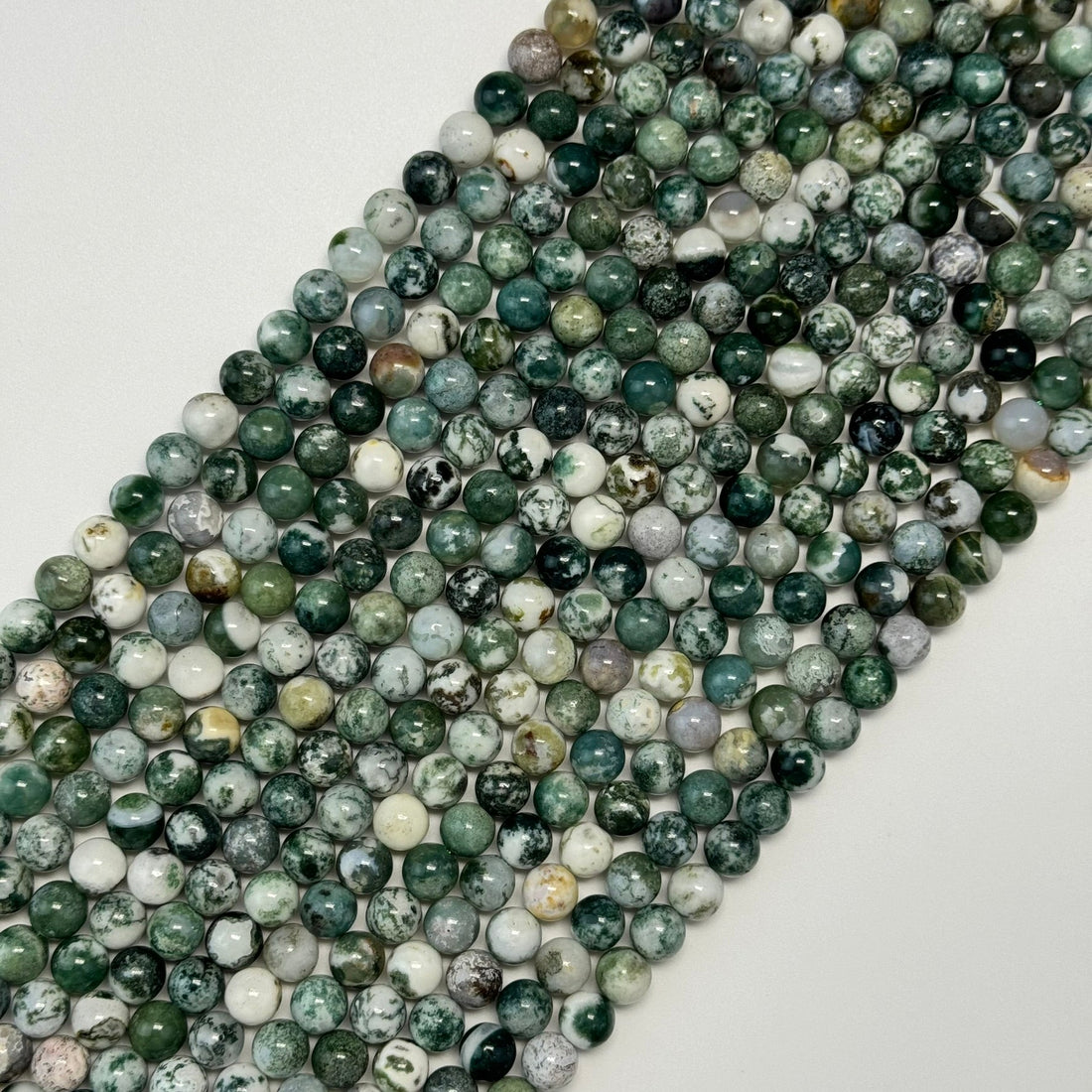
Tree Moss Agate: A Natural Record of Geological Growth
Share
Tree Moss Agate is a remarkable variety of chalcedony known for its intricate, tree-like inclusions that resemble miniature forests or branching roots. This gemstone, composed mainly of silicon dioxide (SiO₂), forms over millennia in volcanic and sedimentary environments, incorporating mineral-rich fluids that create its distinct patterns. In this article, we explore the scientific reasons behind its name, its geological significance, and its applications in jewelry making. If you are looking for natural Tree Moss Agate for your collection, visit this selection of agate gemstone beads.
Why is it Called Tree Moss Agate?
Despite its organic appearance, Tree Moss Agate does not contain actual plant material. The name derives from its distinctive dendritic inclusions, which resemble the branching structure of trees, ferns, or moss. These patterns are formed by manganese and iron oxides that crystallize within the silica-rich matrix during the stone’s formation. The diffusion-limited aggregation process allows these metal oxides to spread in fractal-like structures, mirroring the natural growth patterns of trees and roots.
Under magnification, the inclusions reveal complex networks of branching filaments, a phenomenon influenced by mineral concentration and temperature fluctuations during crystallization. This structural formation has made Tree Moss Agate a subject of interest in mineralogy, as it demonstrates how inorganic processes can mimic organic growth patterns. To find exquisite Tree Moss Agate beads for jewelry-making or collecting, explore this curated agate gemstone collection.
Geological Formation and Mineral Composition
Tree Moss Agate forms within cavities in volcanic rock or sedimentary deposits where silica-rich fluids interact with trace minerals over thousands to millions of years. The primary composition of the stone is chalcedony, a microcrystalline variety of quartz, which provides a translucent to opaque background that enhances the visibility of its dendritic inclusions.
The mineral impurities responsible for the "tree" structures include manganese, iron, and other transition metals that oxidize and crystallize in branching formations. The varying concentrations of these elements influence the color of the inclusions, ranging from deep green to brown and black. The intricate interplay of chemistry and time results in one-of-a-kind patterns, making each specimen unique. If you appreciate the natural artistry of Tree Moss Agate, discover more options in this premium agate gemstone bead collection.
Durability and Jewelry Applications
With a Mohs hardness of approximately 6.5 to 7, Tree Moss Agate is well-suited for various types of jewelry, including pendants, beads, and rings. The combination of durability and natural patterns makes it a preferred choice for artisans seeking to create organic, nature-inspired designs.
In lapidary work, Tree Moss Agate is often cut into cabochons to enhance its internal structures. Some specimens exhibit high translucency, allowing light to pass through and emphasize the intricate dendritic formations. The stone’s ability to pair well with metals like silver, copper, and gold further enhances its desirability for jewelry-making. For a selection of Tree Moss Agate and other stunning natural gemstones, visit this exclusive agate bead collection.
Conclusion
Tree Moss Agate is a geological masterpiece that showcases the beauty of mineral crystallization in nature. Its tree-like inclusions, formed through inorganic chemical processes, provide a stunning visual representation of natural growth patterns. Whether you are drawn to its scientific intrigue or its aesthetic charm, Tree Moss Agate remains a highly sought-after gemstone. To find unique Tree Moss Agate pieces for your jewelry designs or collection, explore this handpicked selection of agate gemstone beads.